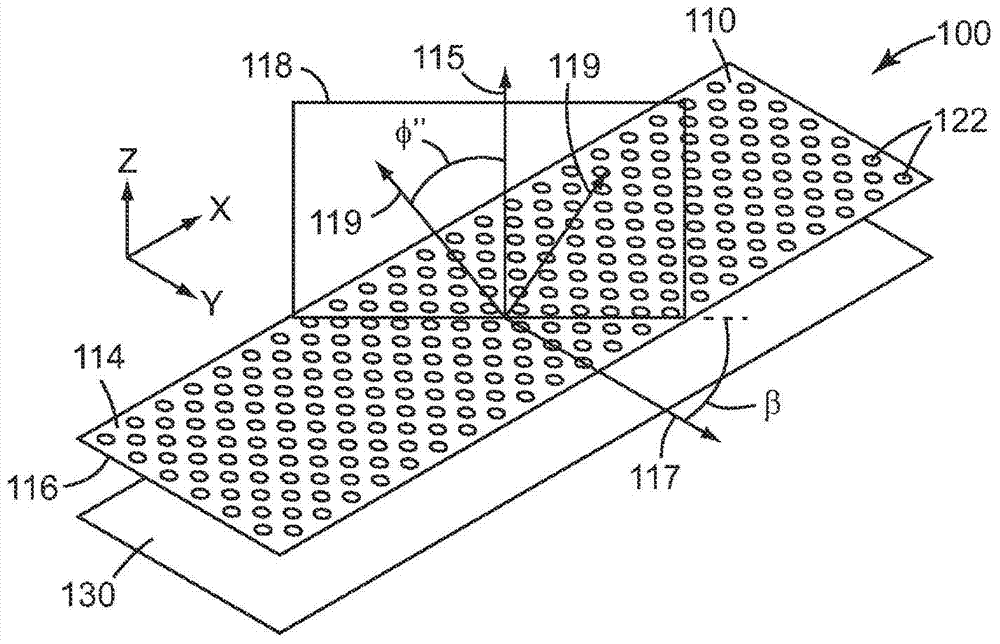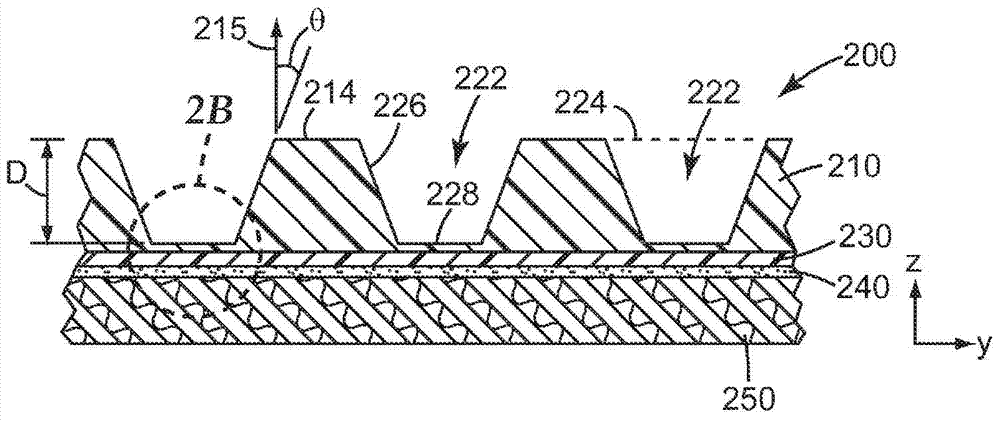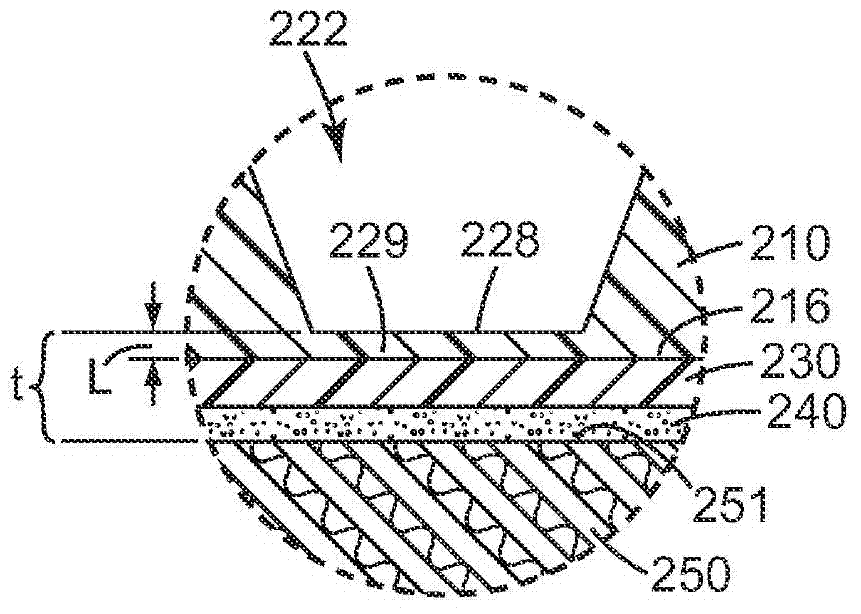Light control film
A technology of light control film and light transmission film, applied in the field of light control film, can solve the problems of increasing film thickness and reducing light transmittance, etc.
- Summary
- Abstract
- Description
- Claims
- Application Information
AI Technical Summary
Problems solved by technology
Method used
Image
Examples
example 1-5
[0223] Microreplication was performed using the UV curing process described in PCT Publication No. WO9511464 and above. Unless otherwise specified, the UV curing process used in these examples does not include Figure 5 The optional second radiation source.
[0224] Tool A, with a patterned area of approximately 7 inches by 36 inches (17.8 cm by 91.4 cm), was secured to a mandrel with an approximate diameter of 37 inches (94 cm) using 3M 8402 tape. Melinex453 film is wound from the unwinding idler to the rewinding idler along the surface of tool A, such as Figure 5 shown. The surface-treated (adhesion-promoting) side of the film faces the tool. Heat the mandrel to 54°C (130°F). Run the film at a line speed of 10 cm / sec (20 ft / min) at a nip pressure of 207 kPa (30 psi) at the point of contact between the first nip roll (95 Shore D nitrile rubber roll) and the mandrel . exist Figure 5 Resin was applied to the membrane by manually pouring small, continuous beads of res...
example 6 and 7
[0236] A film of Teonex Q71 with a thickness of 6 μm was primed on one side with a 5% solids solution of Vitel 1200B in an 85% / 15% mixture of dioxolane and cyclohexanone and dried in an oven at 160°F for 2 minute. The coating thickness was 300 nanometers as measured with a white light interferometer. The film was then coated on the opposite side with a silicone-polyurea adhesive consisting of MQ resin (SR545) and silicone polyurea (SPU) elastomer at 55 : 45 ratio of 28% solids solution composition. SPU elastomers are formed by the condensation reaction of 33 kDa diamodimethicone, Dytek A, and Desmodur W in a ratio of 1:1:2, as described in US Patent No. 6,824,820. The film was then dried in an oven at 160°F for 2 minutes and laminated to a PET film by passing the material through a nip roll in contact with a Loparex 10256 fluorosilicone-treated PET release liner. The coating thickness was 4.2 microns as measured by a white light interferometer.
[0237] Example 6 was prepa...
example 8
[0239] A sample prepared according to Example 1 was coated with a layer of silica to generate Example 8 as follows. Silica deposition was performed in a batch reactive ion plasma etcher (Plasmatherm, model 3280). The microreplicated article was placed on the power electrode, and the chamber was pumped to a base pressure of 5 mTorr. First, the article was plasma treated in an argon plasma at a pressure of 25 mTorr for 20 seconds. After that, tetramethylsilane vapor was introduced at a flow rate of 150 sccm, and the plasma was maintained at a power of 1000 watts for 10 seconds, thereafter, oxygen was added to tetramethylsilane at a flow rate of 500 sccm, Hold for another 10 seconds. After this step, while the plasma was still on, the tetramethylsilane vapor flow was reduced in a stepwise fashion from 150 seem to 50 seem, 25 seem, and 10 seem, each of these steps lasting 10 seconds. After the final step with a tetramethylsilane vapor flow of 25 sccm, the flow was stopped and i...
PUM
| Property | Measurement | Unit |
|---|---|---|
| thickness | aaaaa | aaaaa |
| thickness | aaaaa | aaaaa |
| diameter | aaaaa | aaaaa |
Abstract
Description
Claims
Application Information
 Login to View More
Login to View More - R&D
- Intellectual Property
- Life Sciences
- Materials
- Tech Scout
- Unparalleled Data Quality
- Higher Quality Content
- 60% Fewer Hallucinations
Browse by: Latest US Patents, China's latest patents, Technical Efficacy Thesaurus, Application Domain, Technology Topic, Popular Technical Reports.
© 2025 PatSnap. All rights reserved.Legal|Privacy policy|Modern Slavery Act Transparency Statement|Sitemap|About US| Contact US: help@patsnap.com



